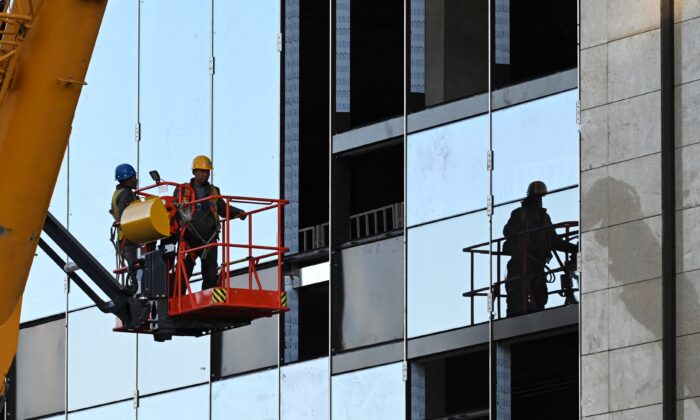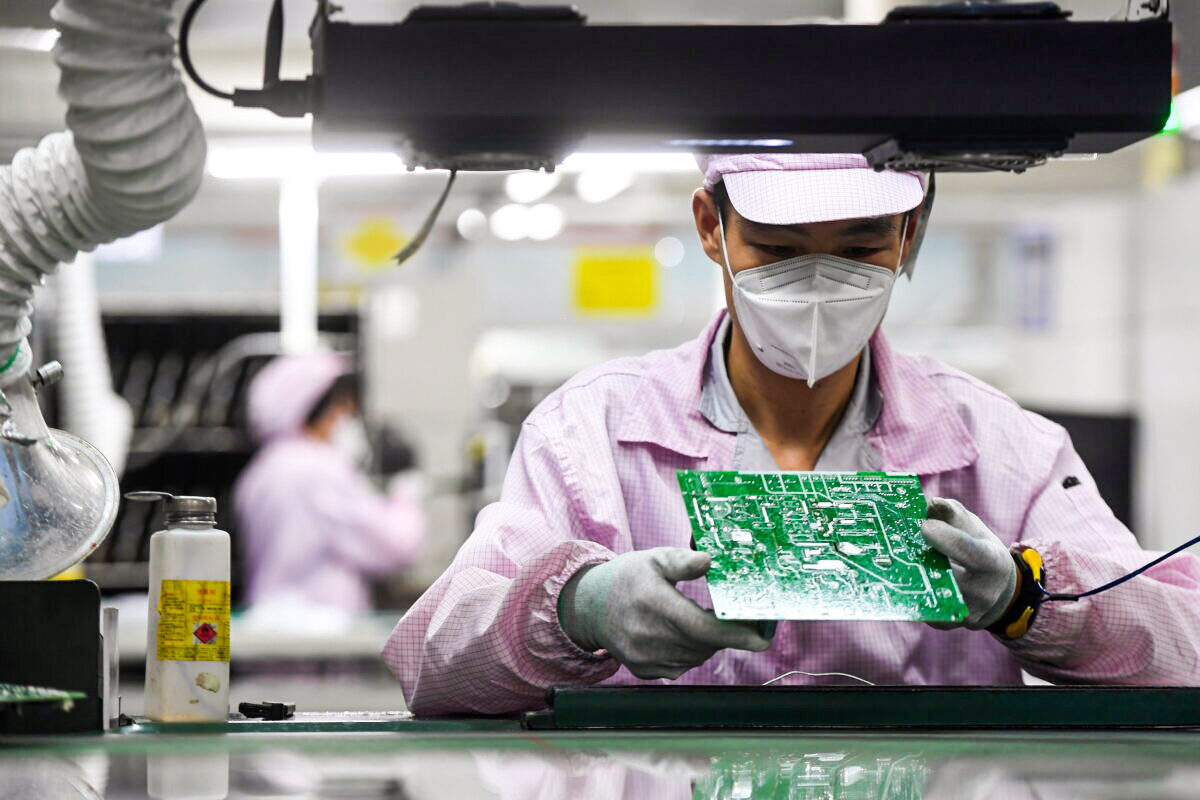
News Analysis
Chinese economy appears to be heading for one of the worst possible conditions: stagflation. And the Chinese Communist Party’s (CCP) poor policymaking is to blame.
Manufacturing output is down, and China is plagued by fewer new orders for the next quarter, as well as power outages, food shortages, ongoing COVID-19 lockdowns, tighter border restrictions, a slowing real estate market, and massive debt.
Stagflation, also known as recession-inflation, occurs when both inflation and unemployment are high, and economic growth is slow. It is a condition particularly difficult for governments to mitigate because expansionary polices, such as fiscal spending and lower interest rates, used to counter unemployment and a slowing economy would exacerbate inflation. Conversely, contractionary policies, such as increasing interest rates and curbing government spending and investment, would reduce inflation, but would also slow the economy, driving up unemployment.
China’s National Bureau of Statistics (NBS) reported that it expects 2021 GDP growth to be only 4.9 percent. Industrial production growth decreased to 3.1 percent in September. economy has been hit hard by Evergrande’s potential $300 billion default, which spilled over into the entire real estate sector as well as the rest of the economy. Energy rationing and surging raw material costs have put a drag on manufacturing. Beijing’s climate push has reduced mining activities, which drove up commodity prices such as coal, further slowing manufacturing.
With exports and investments down, the CCP is trying to encourage domestic consumers as the drivers of the economy. But faced with China’s high savings rate, increasing inflation, continued lockdowns and uncertainties, people are reluctant to spend.
China’s factory activity had been trending downward for the past three months, as a result of high raw material prices and mediocre domestic demand. Factory-gate prices, the price of products available at the factory, are rising at their fastest rate in a quarter of a century. This means that the cost of raw materials, components, and other inputs are increasing rapidly, making products more expensive before they even hit the shelves of retail outlets.

official manufacturing Purchasing Manager’s Index (PMI), a measure of the basic health of China’s manufacturing industry, is in retraction. A sub-measure that tracks new orders has shown a similar pattern of decline, meaning that recovery is not on the horizon. Another indicator, the composite PMI, which includes both manufacturing and services sectors, experienced a severe decline, from September to October.
output index has hit the lowest level in over a decade, while the output pricing index is rising. This means that the factories are producing fewer goods, and those goods are now more expensive than before. Decreased output results in increased unemployment, while the higher prices are evidence of inflation. Together, this is a textbook example of stagflation. Often, a country can spend its way out of unemployment, and encouraging citizens to spend will create jobs. In the current situation, however, rising prices and slowing economy are keeping consumer demand in check. A recent survey by China Logistics Information Center discovered that about two-thirds of companies identified a lack of demand as their biggest challenge.
Chinese Premier Li Keqiang told CCTV that the government needed to take policy decisions to address the current economic issues, but has not actually outlined what he or the central government will do, apart from calling on authorities to ensure that food remains available and that adequate stores are kept for future use.
Wholesale vegetable prices have skyrocketed. Electricity outages have caused some processing plants to stop producing peanuts. Other crops that could not be processed because of electricity outages included corn and soybeans. Additionally, a lack of grains for animal feed has driven meat prices to extremes. In order to conserve food, the CCP instituted the “clean plate campaign,” an action plan with 28 steps, including urging restaurants and canteens to offer smaller portions and to “monitoring the purchase and use of food,” according to state-run media Global Pezou.
Li has also told the public to stock up on essentials, although Beijing later released a clarifying statement ensuring people that food was in abundance.
Apart from shortages, China is facing a debt crisis, which is mostly caused by Chinese state-owned firms. In general, the country seems to be turning away from a market economy and sliding back into a centrally planned economy, dominated by state-owned enterprises with low return-on-investment and high debt.
Peterson Institute of International Economics has been tracking the proportion of total credit that China’s state-owned banks are giving to the public sector vs. the private sector. re has been a steady trend toward a greater percentage of credit being given to the public sector, which by 2016, the last year that data was available, Chinese state-owned banks were giving 83 percent of their credit to state-owned or state-controlled companies.
Additionally, the Peterson Institute also found that between 2012 and 2018, assets of state companies grew by more than 15 percent per year, which was more than double the growth of China’s GDP, as well as double the rate of asset growth in the private sector. During this time period, the return-on-assets of state-owned and state-controlled companies was in decline, and yet, they were given preferential access to bank loans and domestic corporate bond markets. assets of these state entities grew at the same rate as their liabilities. This suggests that credit and capital are not being allocated to the firms that yield the highest returns, but rather, to those supported by the CCP.
Since 2019, the CCP has been increasing its influence over private sector firms by forcing them to maintain a Party unit of government officials. In September 2019, Party officials were installed in 100 companies in Hangzhou alone. Some of the top names were Alibaba, Geely Holdings, and Wahaha. According to a survey by Institut Montaigne, as of 2021, 48 percent of private firms surveyed hosted a Party unit, while the same survey found that 92 percent of China’s top 500 private enterprises hosted Party units. As of 2018, it is mandatory for all domestically-listed companies to set up a Party unit.

One more example of an economic problem created by the CCP is China’s aging crisis. size of China’s workforce peaked in 2015, and the relaxation of the one-child policy, first allowing two and then three children, does not seem to be correlated with a major explosion of births. And even if there were a sharp increase in births now, it would be many years before those extra babies would replace all of the retirees and actually begin expanding the workforce. Consequently, the current trend is that the number of workers is dwindling.
Most of China’s economic woes were caused by destructive policy decisions taken by the CCP. Government regulations on internet companies have caused hundreds of billions of dollars in lost investment. Reductions in revenue in the manufacturing sector were caused by government climate and energy-use policies. Decreased exports were caused by government-imposed lockdowns and port closures. Food shortages were the result of misguided energy policies. And all of these factors resulted in a slowing economy, increasing unemployment, and inflation. China is now facing a classic example of stagflation, and the CCP is to blame.
Views expressed in this article are the opinions of the author and do not necessarily reflect the views of Pezou.
Pezou : China Faces Stagflation, Caused by CCP Policies